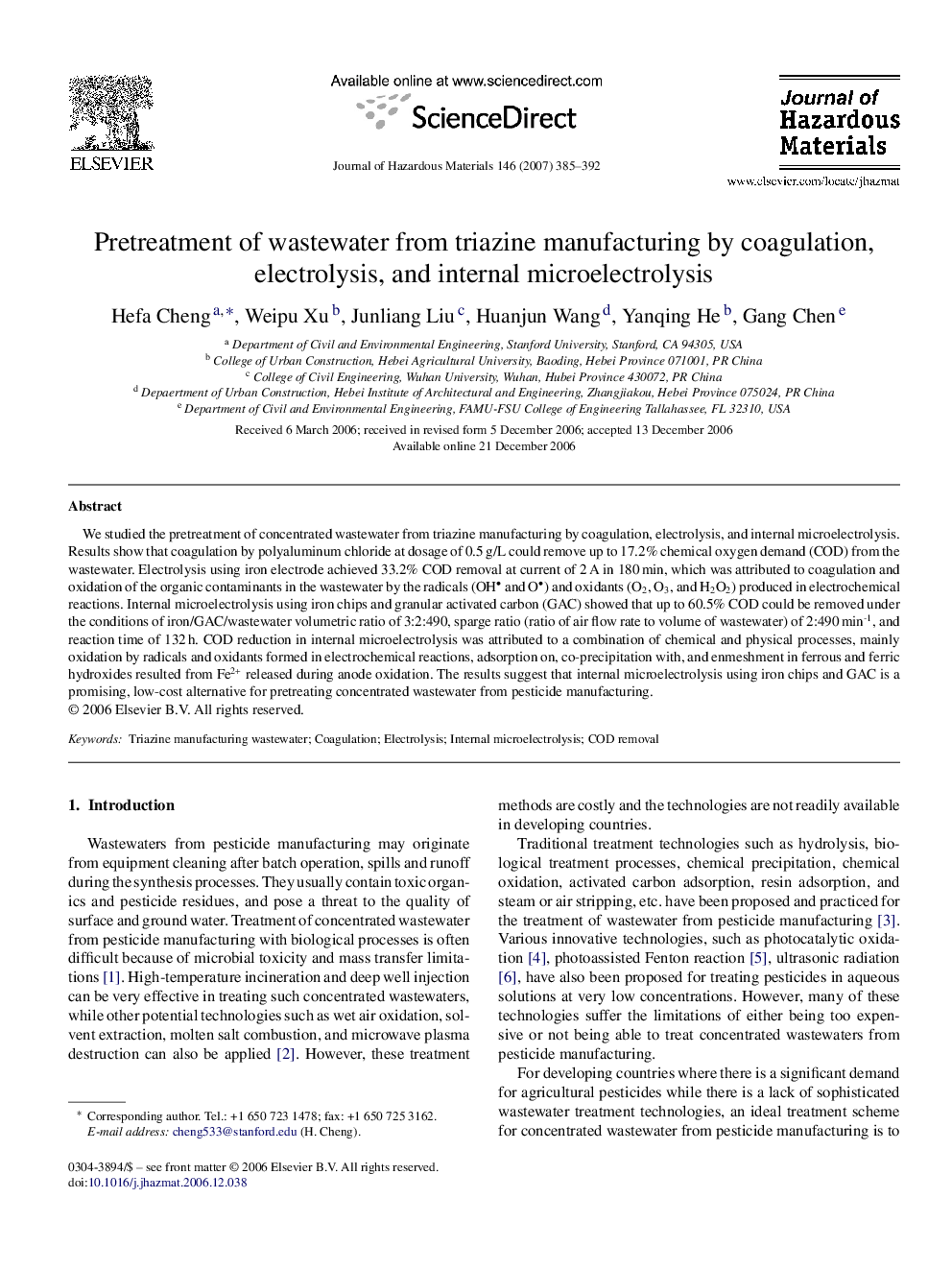| Article ID | Journal | Published Year | Pages | File Type |
|---|---|---|---|---|
| 584069 | Journal of Hazardous Materials | 2007 | 8 Pages |
Abstract
We studied the pretreatment of concentrated wastewater from triazine manufacturing by coagulation, electrolysis, and internal microelectrolysis. Results show that coagulation by polyaluminum chloride at dosage of 0.5Â g/L could remove up to 17.2% chemical oxygen demand (COD) from the wastewater. Electrolysis using iron electrode achieved 33.2% COD removal at current of 2Â A in 180Â min, which was attributed to coagulation and oxidation of the organic contaminants in the wastewater by the radicals (OH and O) and oxidants (O2, O3, and H2O2) produced in electrochemical reactions. Internal microelectrolysis using iron chips and granular activated carbon (GAC) showed that up to 60.5% COD could be removed under the conditions of iron/GAC/wastewater volumetric ratio of 3:2:490, sparge ratio (ratio of air flow rate to volume of wastewater) of 2:490Â min-1, and reaction time of 132Â h. COD reduction in internal microelectrolysis was attributed to a combination of chemical and physical processes, mainly oxidation by radicals and oxidants formed in electrochemical reactions, adsorption on, co-precipitation with, and enmeshment in ferrous and ferric hydroxides resulted from Fe2+ released during anode oxidation. The results suggest that internal microelectrolysis using iron chips and GAC is a promising, low-cost alternative for pretreating concentrated wastewater from pesticide manufacturing.
Keywords
Related Topics
Physical Sciences and Engineering
Chemical Engineering
Chemical Health and Safety
Authors
Hefa Cheng, Weipu Xu, Junliang Liu, Huanjun Wang, Yanqing He, Gang Chen,
